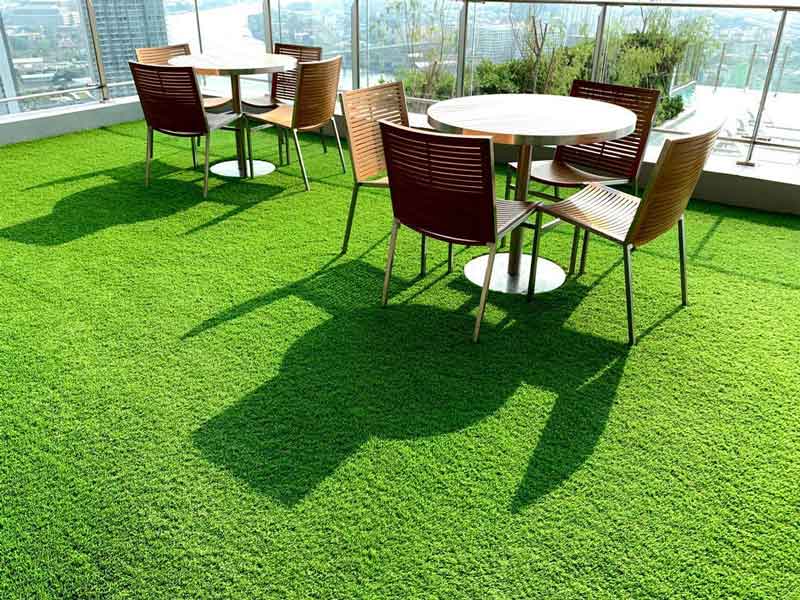Artificial grass, once confined to sports fields and outdoor landscapes, has witnessed a surge in popularity that extends well beyond traditional applications. From residential lawns to commercial spaces, the synthetic alternative to natural grass has become a staple in modern landscaping. In this comprehensive exploration, we delve into the myriad reasons behind the widespread popularity of artificial grass, uncovering the factors that have propelled it into the limelight of contemporary design.
Year-Round Lushness
One of the primary reasons for the widespread adoption of artificial grass is its ability to maintain a lush and vibrant appearance throughout the year. Unlike natural grass, which undergoes seasonal changes and requires constant maintenance, artificial grass remains evergreen, providing a consistent and appealing aesthetic regardless of the weather or climate.
Low Maintenance Appeal
The allure of artificial grass is amplified by its low-maintenance nature. Traditional lawns demand regular watering, mowing, and fertilizing to keep them in pristine condition. Artificial grass, on the other hand, requires minimal upkeep. With no need for watering or extensive care, it offers a time-saving and convenient solution for homeowners and businesses alike.
Water Conservation Efforts
In regions grappling with water scarcity or strict water conservation measures, artificial grass emerges as an eco-friendly alternative. Its installation contributes to water conservation efforts, as it eliminates the need for extensive irrigation, reducing overall water consumption and promoting sustainable landscaping practices.
Aesthetic Versatility
Artificial grass is celebrated for its aesthetic versatility. It can be customized to suit various preferences, from the length and shade of the grass blades to the overall design and patterns. This adaptability allows for creative expression in landscaping, making it a favorite choice for those seeking unique and personalized outdoor spaces.
Durability and Resilience
The durability and resilience of artificial grass are key factors contributing to its popularity. Designed to withstand heavy foot traffic, harsh weather conditions, and the wear and tear associated with outdoor use, synthetic grass maintains its appearance and functionality over extended periods, offering a long-lasting and cost-effective landscaping solution.
Allergen-Free Environment
For individuals with grass allergies, maintaining a natural lawn can be challenging. Artificial grass provides a hypoallergenic alternative, as it does not release pollen or other allergens into the air. This makes it a practical choice for creating allergy-free outdoor spaces.
Pet-Friendly Solution
Artificial grass has become a go-to solution for pet owners seeking a pet-friendly outdoor environment. Its resistance to stains and odors, coupled with easy cleaning capabilities, makes it an ideal surface for pets to play and relax. The synthetic material ensures a comfortable and clean space for both pets and their owners.
Time and Cost Efficiency
The installation and maintenance of natural grass require a significant investment of time and money. Artificial grass, with its minimal upkeep demands and long lifespan, proves to be a time and cost-efficient alternative. Homeowners and businesses appreciate the economic benefits it offers in the long run.
Environmental Conservation
Artificial grass contributes to environmental conservation efforts by reducing the need for pesticides, herbicides, and fertilizers. The elimination of these chemicals not only benefits the environment but also promotes a healthier and more sustainable approach to landscaping.
Conclusion: A Greener Tomorrow with Artificial Grass
The popularity of artificial grass can be attributed to a confluence of factors that address the evolving needs of modern lifestyles and environmental consciousness. From its aesthetic versatility and low maintenance appeal to its positive impact on water conservation and allergy-free environments, artificial grass has earned its place as a transformative element in contemporary landscaping.
As we continue to embrace sustainable practices and seek innovative solutions for outdoor spaces, artificial grass stands as a beacon of green innovation. Its adaptability, resilience, and eco-friendly attributes position it as a key player in the quest for greener and more sustainable outdoor environments. Whether transforming residential lawns or enhancing commercial landscapes, artificial grass is paving the way for a greener tomorrow.


